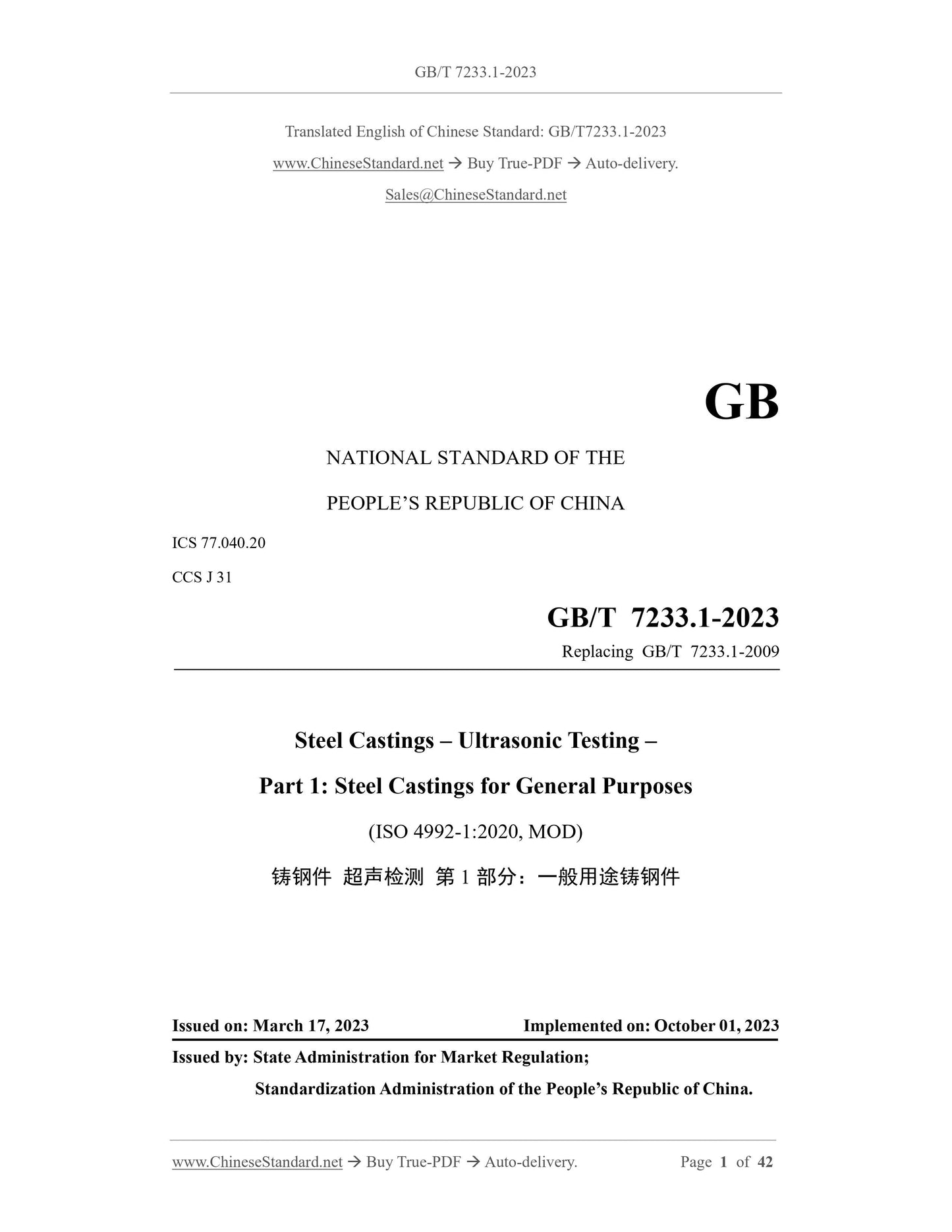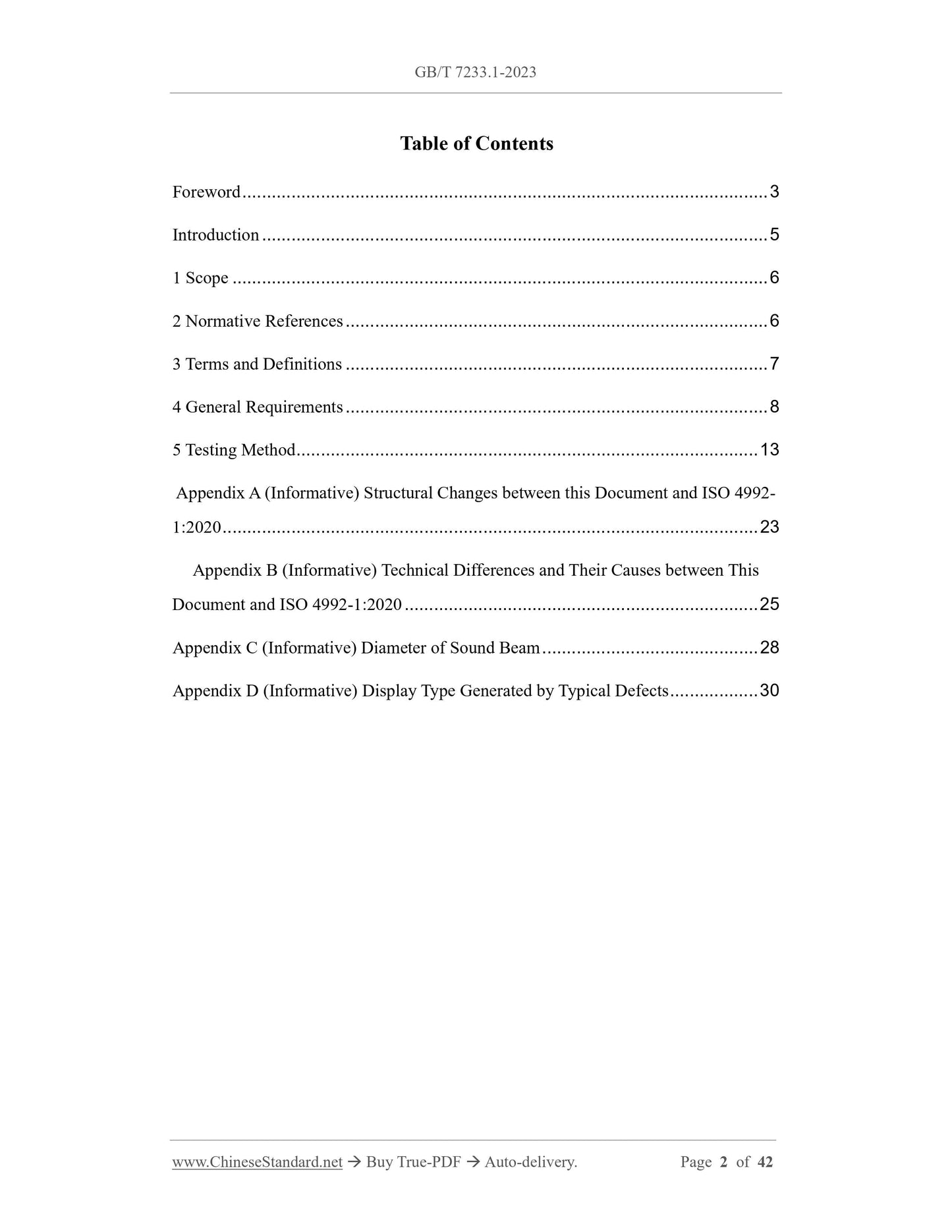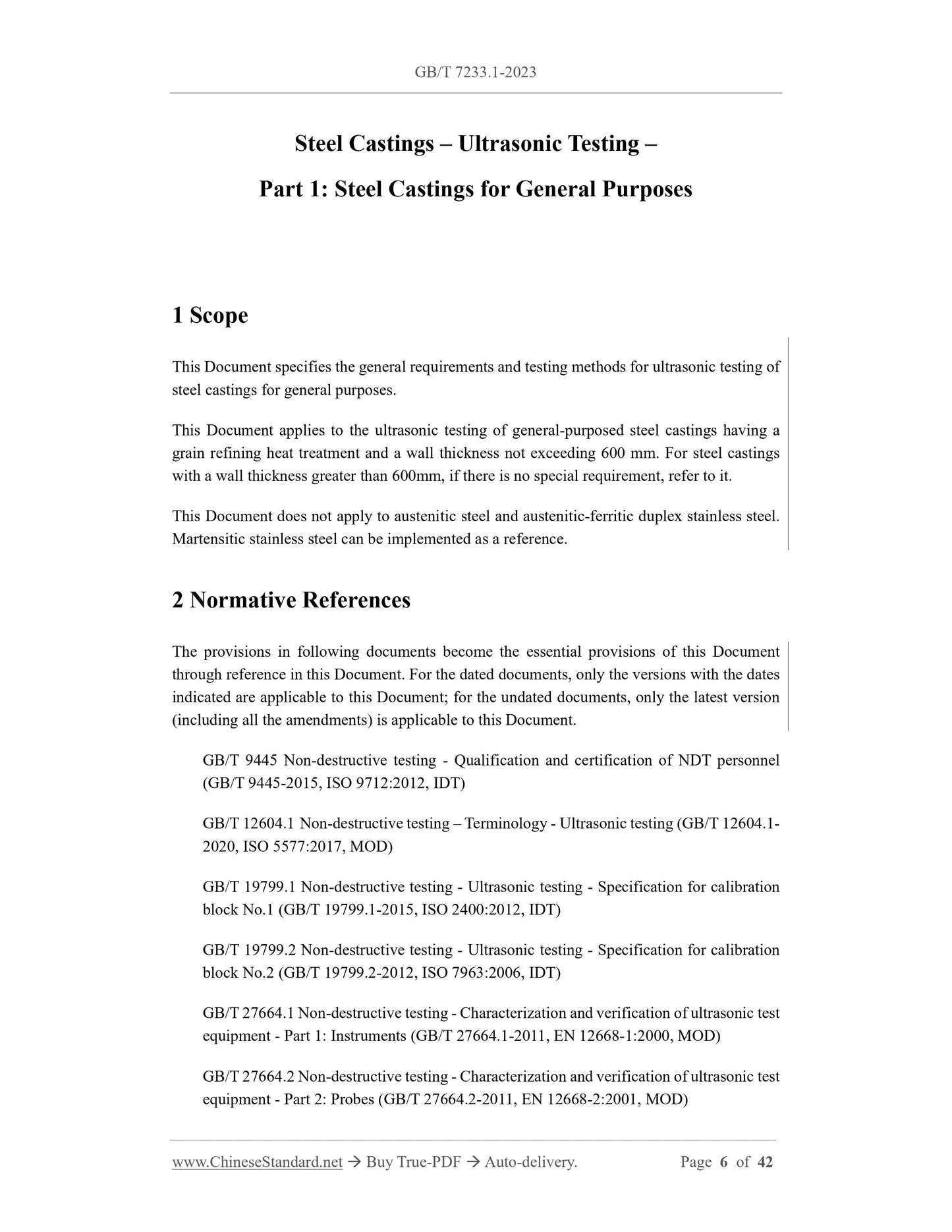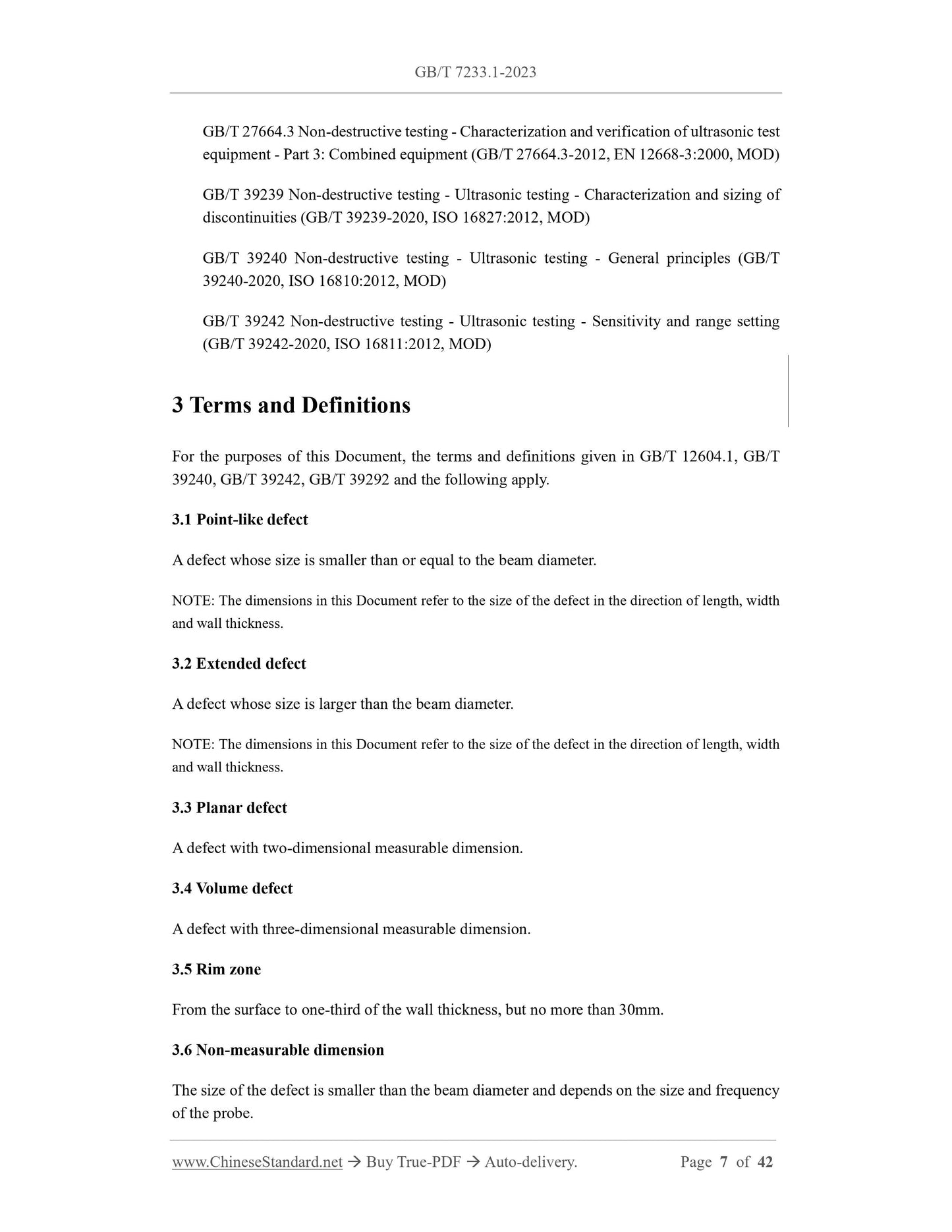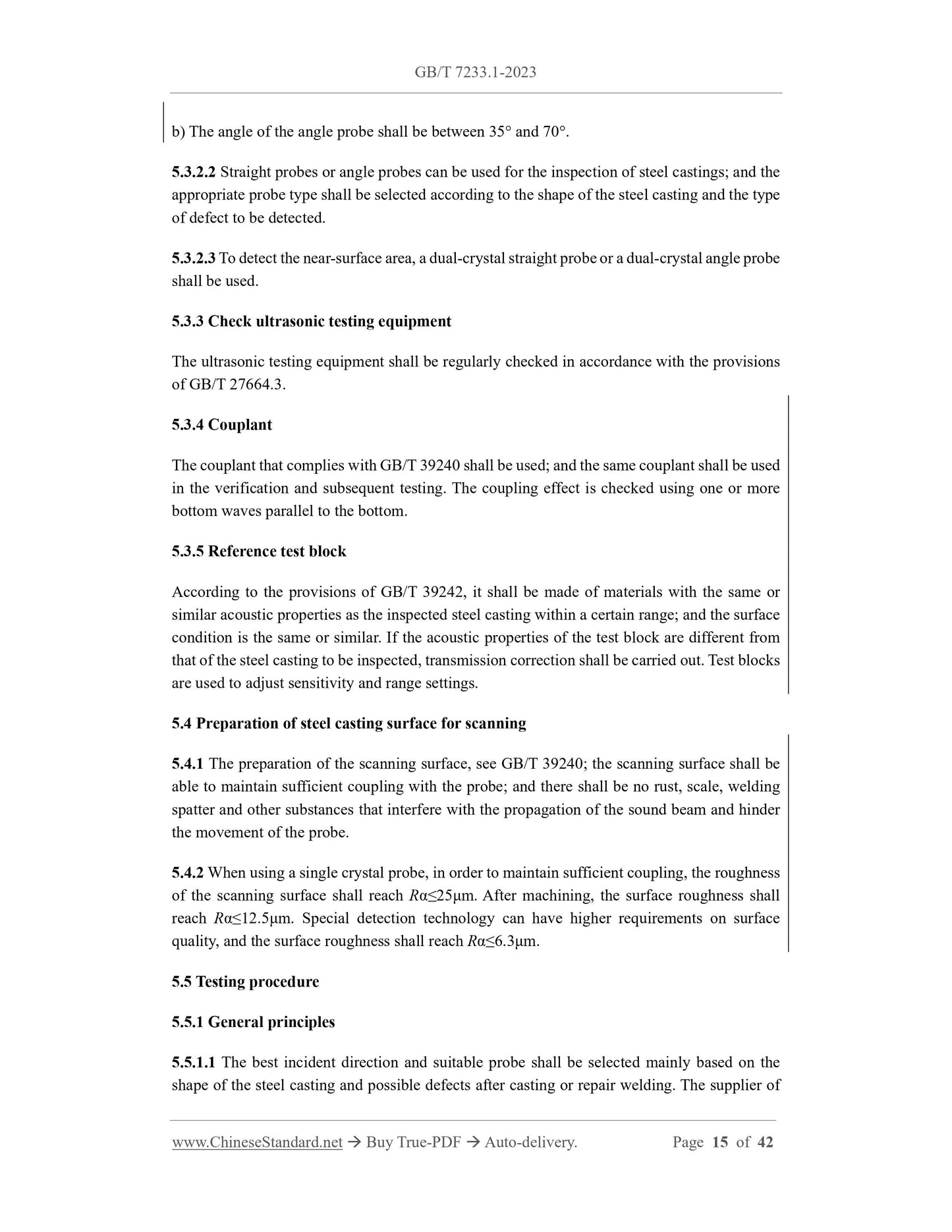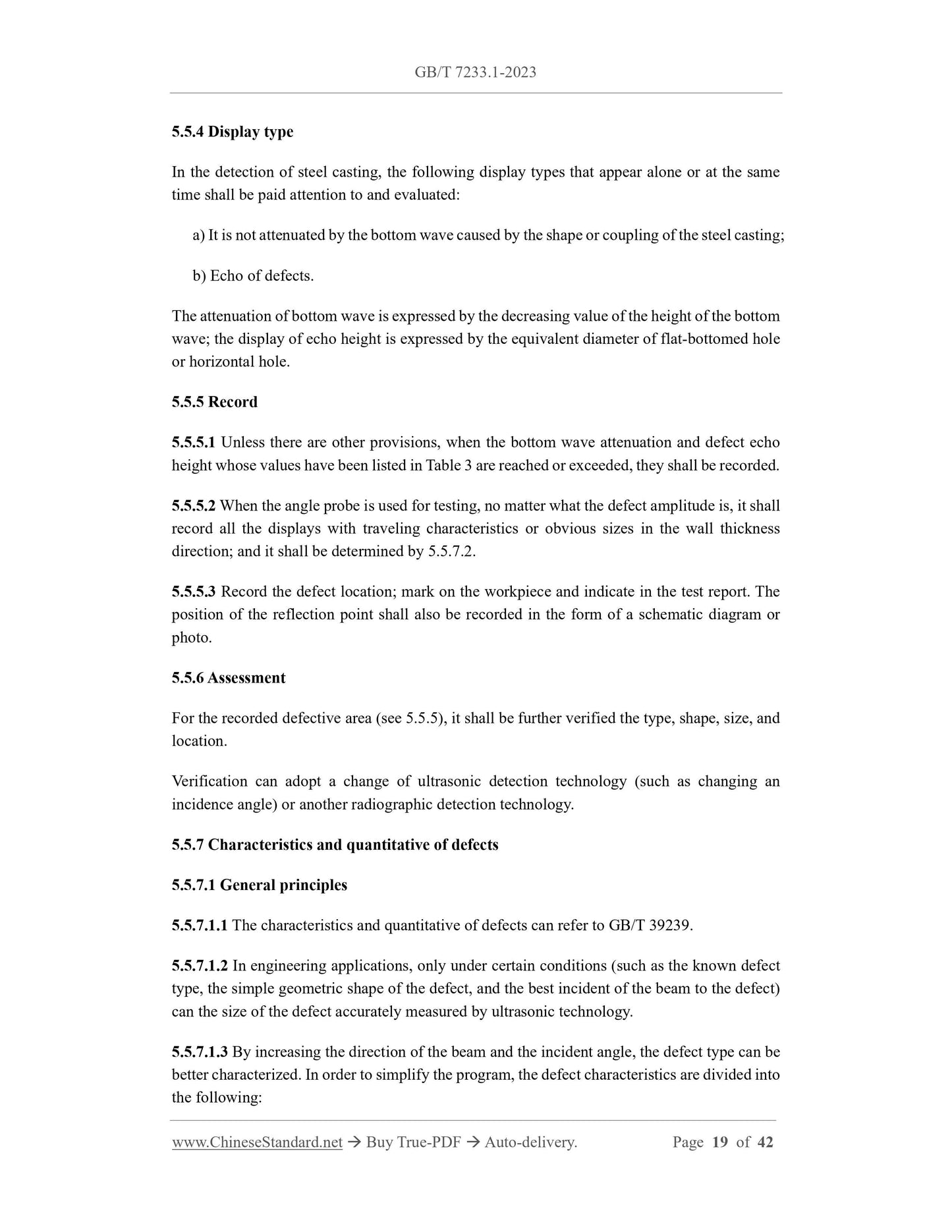1
/
of
7
www.ChineseStandard.us -- Field Test Asia Pte. Ltd.
GB/T 7233.1-2023 English PDF (GB/T7233.1-2023)
GB/T 7233.1-2023 English PDF (GB/T7233.1-2023)
Regular price
$500.00
Regular price
Sale price
$500.00
Unit price
/
per
Shipping calculated at checkout.
Couldn't load pickup availability
GB/T 7233.1-2023: Steel castings - Ultrasonic testing - Part 1: Steel castings for general purposes
Delivery: 9 seconds. Download (and Email) true-PDF + Invoice.Get Quotation: Click GB/T 7233.1-2023 (Self-service in 1-minute)
Newer / historical versions: GB/T 7233.1-2023
Preview True-PDF
Scope
This Document specifies the general requirements and testing methods for ultrasonic testing ofsteel castings for general purposes.
This Document applies to the ultrasonic testing of general-purposed steel castings having a
grain refining heat treatment and a wall thickness not exceeding 600 mm. For steel castings
with a wall thickness greater than 600mm, if there is no special requirement, refer to it.
Basic Data
| Standard ID | GB/T 7233.1-2023 (GB/T7233.1-2023) |
| Description (Translated English) | Steel castings - Ultrasonic testing - Part 1: Steel castings for general purposes |
| Sector / Industry | National Standard (Recommended) |
| Classification of Chinese Standard | J31 |
| Classification of International Standard | 77.040.20 |
| Word Count Estimation | 34,336 |
| Date of Issue | 2023-03-17 |
| Date of Implementation | 2023-10-01 |
| Older Standard (superseded by this standard) | GB/T 7233.1-2009 |
| Issuing agency(ies) | State Administration for Market Regulation, China National Standardization Administration |
Share
